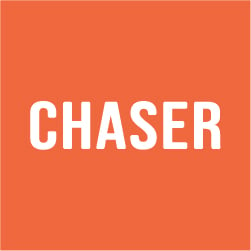As the lifeblood of a business, cash flow and its management is of critical importance to business owners. Here at Chaser, our mission has always been to keep developing the world's best cloud credit control software to ensure businesses get their invoices paid on time, in less time.
There are times, however, when businesses suddenly and urgently need a cash flow boost due to an unexpected emergency. Whether it’s equipment breakdown, a major customer going under, or an unexpected opportunity appearing - every business will suffer a shock to their cash flow at some point.
We were recently speaking to our friends at Capital on Tap about the 3 things a business needs to do today to fix it's credit control. In return, they gave us the rundown on 6 options businesses have available to them when they need an urgent cash flow boost. Here they are to help you identify which option may be best suited for your business.
1. Bank overdraft
Much like overdraft facilities on your own personal bank account, a business may make use of overdraft facilities on its business account.
Authorised overdrafts are pre-arranged with the bank, allowing you to spend an agreed amount through normal payment methods. Unauthorised overdrafts are when you spend beyond any agreed amount, usually incurring higher fees more quickly.
To get started with an overdraft, take a look at your agreement with your bank when you opened your business account. One may already be in place. Otherwise, contact your bank to get the ball rolling.
Main advantages
- Easy to access (sometimes) - Your bank may already have a facility ready to be opened alongside your business bank account (if it’s not in place already).
- Flexible - You can usually dip in and out of your overdraft without much fuss.
- Cost-free potential - In most cases, if you do not use the overdraft for the month then you will have no extra charges to account for.
Main disadvantages
- Difficult to access (sometimes) - To set up an overdraft, particularly those of a high limit, some banks require lengthy application forms, face-to-face meetings, and supporting documents.
- Slippery slope - There can be a number of fees associated with spending from your overdraft, including transaction fees, daily/weekly/monthly fees, and interest, which can add up quickly.
- Eye on the ball - Some overdraft facilities do not automatically prevent you from overspending, which can result in additional costs.
2. Bank loan
Unlike an overdraft which sets a borrowing limit that can be dipped in and out of, a loan will set a specific borrowing amount. A loan will also have a repayment plan agreed in advance between you and the bank. This comprises the amount borrowed, interest charges for the duration of the loan, and the timeframe to pay back the amount borrowed.
To get a bank loan, you need not apply through your current business bank account provider. Shop around to find the best terms for your business.
Main advantages
- All shapes and sizes - There are loan packages designed for all kinds of businesses and situations. Chances are you'll find one well-suited to yours.
- Predictable repayments - You’ll know upfront exactly what you need to be paying back each month.
- Builds credit score - As long as you meet the repayments, your business’ credit score will improve, which can make the terms of any future loans more favourable to you.
Main disadvantages
- Inflexible - Once the agreement has been approved by both parties, you may struggle with changes such as borrowing further funds until the initial loan has been repaid in full.
- Valuable asset risk - Banks are careful and will want to cover their (potential) losses. So you’ll usually need to put up valuable assets as collateral in case you can’t make repayments.
- Red tape - Similar to setting up some overdrafts, bank loans can require lengthy application forms, face-to-face meetings, and supporting documents to secure.
3. Credit card
Some businesses can find it difficult to secure a favourable bank loan (or sometimes any bank loan at all). While not often thought of for business financing, credit cards can be used to boost your business’ cash flow in an emergency.
Once again, you need not apply for a business credit card with your business’ existing bank. Shop around to find the best terms for your business.
Main advantages
- No collateral required - Unlike a bank loan, you won’t need to pony up and risk losing a valuable asset if unexpected circumstances cause you to fail to make a repayment.
- Builds credit score - Similar to bank loans, as long as you’re meeting the repayments, your business’ credit score will improve, helping improve the terms of any future credit you seek.
- Lower barrier to entry - The requirements for a business credit card are usually far less stringent than those for a bank loan.
Main disadvantages
- Be disciplined - Like overdrafts, a credit card can have various variable fees associated with it (high interest rates, fees, annual fee for card). The onus is on you to ensure you don’t overspend what you can afford to pay back each month.
- Your personal credit matters - Business credit cards often require a personal guarantee in the event that the business can no longer cover the necessary repayments. If you have a bad credit history, you could find it difficult to find a card issuer ready to give you a chance.
- Security is key - Remember to always keep your card in a secure place and never store your PIN with it, as it can lead to fraudulent transactions and stressful paperwork to dispute them.
4. Invoice financing
Offered by many banks, invoice financing is the borrowing of money against unpaid invoices. For goods or services you’ve provided to your customer and invoiced them for, you can have a percentage of the amount paid to you by a lender offering invoice finance. Typically around 70-85%.
There are two kinds of invoice financing - discounting and factoring. If the lender is offering invoice discounting, you would continue chasing your customer for the amount due until it is paid. The lender would then take back the borrowed amount from this (i.e. the 70-85%), along with a service fee.
If the lender is offering invoice factoring, they will manage the credit control for you, chasing up your customer for payment. When they pay, the lender takes back the borrowed amount and their service fee from this amount. The remaining balance is then made available to you. Due to the additional services offered, the fees associated with invoice factoring will usually be higher than invoice discounting.
Once again, you need not seek invoice financing options from your business’ existing bank. Shop around to find the best provider for your business.
Main advantages
- Off your plate - If your business’ credit control function isn’t producing results or is costing too much time, invoice factoring may provide a temporary fix to that problem.
- No collateral required - Unlike a bank loan, you won’t need to pony up and risk losing a valuable asset if unexpected circumstances cause you to fail to make a repayment.
- Perfect fit - The cash injection from invoice financing is tied directly to your sales ledger, so there’s no risk of borrowing too little or too much, as with some financing methods.
Main disadvantages
- Revenue loss - When the invoices purchased by the lender are paid by your customer, the lender will keep a percentage of the revenue.
- Customer (dis)satisfaction - Enabling a third party to collect unpaid invoices on your behalf risks damaging your customer relationships. If poor communication is used by the lender, your customers may decide to take their business elsewhere.
- Unexpected hold - Where too many of your customers are late, your finance provider may need to place your facility on hold until repayments are made. This means your business could be at risk of losing essential access to cash flow to no real fault of your own.
5. Asset financing
If your cash flow woes are preventing your business from acquiring the tools, equipment, or technology it needs, asset financing is another option available to you. Similar to a loan, asset financing is the borrowing of money against collateral - in this case, the asset you’re trying to secure for your business. Naturally, the financing is limited by the value of the asset itself, with repayment periods limited by the economic useful life of the equipment.
Many vendors specialise in asset financing. Shop around to find the best provider for your business.
Main advantages
- Dodge a big hit - Purchasing some equipment can take a heavy toll on your cash flow, but with asset financing you can minimise or eliminate that impact.
- Pre-arranged collateral - Don’t need to pony up collateral as the asset itself acts as the collateral.
- Fixed interest - Most providers will offer fixed rates on monthly repayments, enabling you to have a clear and concise repayment plan ahead of opening the facility.
Main disadvantages
- More expensive - The overall cost to your business will be greater than buying the asset outright.
- Early payments - You may be required to pay a deposit or a few repayments in advance.
- Cancellation rights - Certain contracts (especially long term ones) can prove difficult to cancel early. Make sure you understand all the terms and conditions before going ahead, and remember to seek legal advice if you are unsure.
6. Alternative lenders and bank challengers
Since 2008, considerable changes to regulations and lending restrictions have transformed the financial services industry. On the back of the banking crisis, high street banks' services became less open to new ventures and smaller businesses. Their lending criteria can be harder to meet, and the bureaucracy deterring to applicants that had been offered a facility. Coupled with the technological advances of the last decade, these changes paved the way to alternative lenders and bank challengers.
Main advantages
- Faster processes - Most challengers’ services are exclusively online, which means they use technology to their advantage to offer access to funds within hours rather than days or weeks.
- Emphasis on customer service - Because most challengers offer niche products, they can focus their efforts on ensuring that each customer becomes a success story.
- Flexibility - Challengers’ reputation is built on being the helping hand their customers could no longer expect from high street banks. So their eligibility criteria tend not to be as demanding.
Main disadvantages
- Online world - Most challengers will expect you to apply online and fully manage your account via their website or mobile application. Although this is a great way to save time, it does mean that you will need some basic computer knowledge and an email address to use their services.
- No physical branches - Similarly, if you rely on visiting a bank branch to deposit cash or speak to an advisor, you may find it difficult to find an alternative lender that provides this. Most of them do not have offices open to the public and will offer customer services via phone, email, or online chat instead.
- Interest rates - Although they tend to be competitive, each lender will have different starting interest rates and APR. So make sure to compare a few before choosing the lender that would fit your purpose best.
There you go, these are 6 options you have to inject your business with extra cash flow in today’s financial scene. Because each business need is different, you may need to combine several of these options at the same time, or alternate between some of them based on your requirements. Although traditional banks may offer most of these services in (virtually) one package, you can take advantage of competitive rates for different services and save valuable cash by using several providers for different facilities.
One provider is our co-author for this post - the London-based Capital on Tap. Since 2012, they've been on a mission to provide UK SMEs with quick and easy access to dedicated funding. More than £500 million has already been accessed by over 45,000 SMEs through the Capital on Tap Mastercard. Their product has earned them the Emerging Payment Award for Leading Payment Startup in 2017, and saw Capital on Tap enter the Tech Track 100 at number 48 in 2017.
A Capital on Tap account offers an additional credit line within minutes and comes with a business Mastercard for spending on the go. The card offers 0% interest for up to 37 days and is accepted at millions of retailers worldwide with 0% commission on fx spend. The credit line can also be transferred directly into a business bank account online within seconds if necessary. For more information and to apply for an account, visit www.capitalontap.com.
Header image modified from photo courtesy of Clem Onojeghuo via Unsplash.





